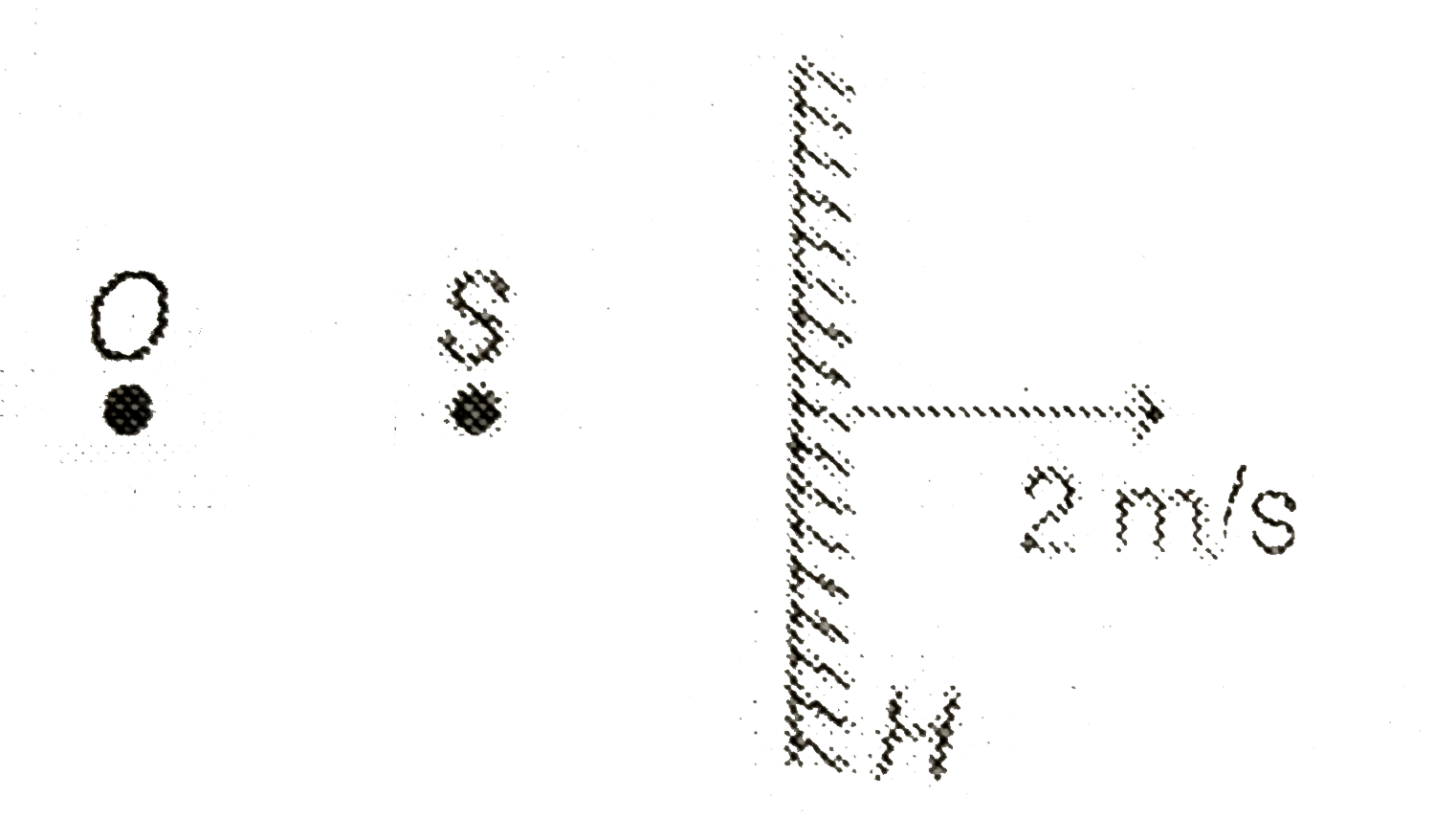A sound wave of frequency f propagating through air with a velocity C, is reflected from a surface which is moving away from the source with a constant speed V. Find the frequency of the reflected wave, measured by the observer at the position of the source.
f(c+2v)c+v
f(c+v)c−v
f(c−v)c+v
f(c−v)c−2v
The correct Answer is:C
To solve the problem of finding the frequency of the reflected wave measured by the observer at the position of the source, we can follow these steps:
1. Identify the Given Information:
- Frequency of the source sound wave: f
- Velocity of sound in air: C
- Velocity of the reflecting surface moving away from the source: V
2. Determine the Incident Frequency:
- When the sound wave travels from the source to the moving surface, we can use the Doppler effect formula to find the frequency of the sound wave as it reaches the moving surface.
- The formula for the frequency observed by a moving observer is given by:
fi=C−VC⋅f
- Here, C is the speed of sound, V is the speed of the moving surface (which is moving away from the source), and f is the original frequency.
3. Calculate the Reflected Frequency:
- Now, the surface acts as a new source of sound with frequency fi and reflects the sound back towards the observer (the original source).
- The frequency of the reflected wave fr can be calculated using the Doppler effect again:
fr=CC+V⋅fi
- Substituting fi from the previous step:
fr=CC+V⋅(C−VC⋅f)
4. Simplify the Expression:
- Simplifying the expression for fr:
fr=C(C−V)C(C+V)⋅f
- This simplifies to:
fr=C−VC+V⋅f
5. Final Result:
- The frequency of the reflected wave measured by the observer at the position of the source is:
fr=C−VC+V⋅f
- Frequency of the source sound wave: f
- Velocity of sound in air: C
- Velocity of the reflecting surface moving away from the source: V
- When the sound wave travels from the source to the moving surface, we can use the Doppler effect formula to find the frequency of the sound wave as it reaches the moving surface.
- The formula for the frequency observed by a moving observer is given by:
fi=C−VC⋅f
- Here, C is the speed of sound, V is the speed of the moving surface (which is moving away from the source), and f is the original frequency.
- Now, the surface acts as a new source of sound with frequency fi and reflects the sound back towards the observer (the original source).
- The frequency of the reflected wave fr can be calculated using the Doppler effect again:
fr=CC+V⋅fi
- Substituting fi from the previous step:
fr=CC+V⋅(C−VC⋅f)
- Simplifying the expression for fr:
fr=C(C−V)C(C+V)⋅f
- This simplifies to:
fr=C−VC+V⋅f
- The frequency of the reflected wave measured by the observer at the position of the source is:
fr=C−VC+V⋅f
Similar Questions
A source emitting a sound of frequency f is placed at a large distance from an observer. The source starts moving towards the observer with a uniform acceleration a. Find the frequency heard by the observer corresponding to the wave emitted just after the source starts. The speed of sound in the medium is v.
View Solution
A sound wave of frequency n travels horizontally to the right with speed with speed c. It is reflected from a broad wall moving to the left with speed v. The number of beats heard by a stationary observer to the left of the wall isView Solution
A sound wave of frequency n travels horizontally to the right with speed with speed c. It is reflected from a broad wall moving to the left with speed v. The number of beats heard by a stationary observer to the left of the wall isView SolutionA source of sound emitting a note of frequency 200 Hz moves towards an observer with a velocity v equal to the velocity of sound. If the observer also moves away from the source with the same velocity v, the apparent frequency heard by the observer is
View SolutionA stationary sound sound 's' of frequency 334 Hz and a stationary ovserver 'O' are placed near a reflecting suface moving away from the source with velocity 2 m/s as shown in the figure. If the velocity of the sound waves is air is v= 330 m/s the apparent frequency of the echo is
 View Solution
View SolutionA sound wave of frequency f travels horizontally to the right . It is teflected from a larger vertical plane surface moving to left with a speed v. the speed of sound in medium is c
(a) The number of waves striking the surface per second is f(c+υ)c
(b) The wavelength of reflected wave is c(c−υ)f(c+υ)
(c) The frequency of the reflected wave is f((c+υ))(c+υ)
(d) The number of beats heard by a stationary listener to the left of the reflecting surface is υfc−υView Solutionif the speed of a sound source is equal to the speed fo sound and the source is moving away from the observer, then the ratio of apparent frequency to the original frequency is
View SolutionA source of sound of frequency 1.8kHz moves uniformly along a straight line at a distance 250m from observer. The velocity of source is 0.8C where C is the velocity of sound. Find out the frequency of sound received by observer (in kHz) at the moment when the source gets closest to him.
View SolutionA source of sound of frequency 500 Hz is moving towards an observer with velocity 30 m/s . The speed of sound is 330 m/s . the frequency heard by the observer will be
View SolutionAn observer is moving with half the speed of light towards a stationary microwave source emitting waves at frequency 10 GhHz. What is the frequency of the microwave measured by the observer? (speed of light=3×108ms)
View Solution
